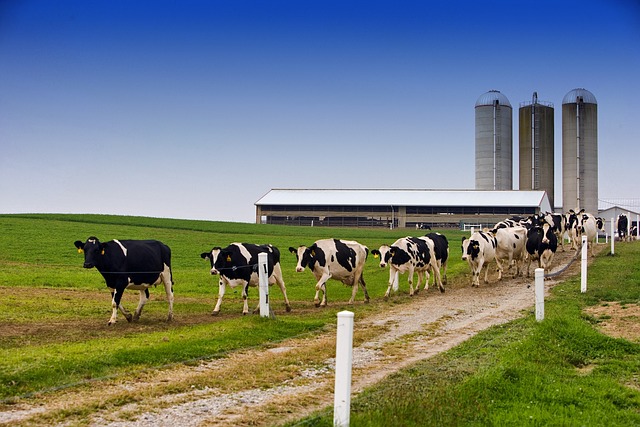How to answer Rate of Flow questions (GCSE Maths)
Rate of flow is a topic that’s sometimes omitted in GCSE Maths text books, or perhaps included in the form of just a question or two in the section on compound measures. It’s only needed for the Higher Tier so you don’t need to worry about it if you’re doing Foundation.
This article aims to help you understand what rate of flow is all about, and provide you with additional practice at the skills you’ll need to answer questions on the topic.
What is rate of flow?
Rate of flow is the speed at which something moves into or out of a container, or past a particular point (e.g. water in a river). It’s used for a fluid or a substance that flows in a similar manner, for example water draining out of a bathtub or grain being poured into a silo.
It’s measured as [a unit of volume] / [a unit of time],
for example cm³ per second, litres per minute, m³ per hour.
You often need to be able to convert between units in order to complete calculations involving rate of flow.
For volume you’ll need these equivalents:
1 cm³ = 1 ml so 1000 cm³ = 1000 ml = 1 litre
You might also find it helpful to think of a litre as being a cube of side length 10 cm, giving a volume of 10 × 10 × 10 = 1000 cm³.
1 m³ = 1 000 000 cm³ (since a metre cube is 100 cm × 100 cm × 100 cm)
which is 1000 × 1000 cm³, or 1000 litres.
And for time:
1 minute = 60 seconds
1 hour = 60 minutes (or 3600 seconds)
1 day = 24 hours
If you’re not sure whether to multiply or divide, think of the context: if the time is longer, will the amount of fluid be transferred be greater or less than in the shorter time?
Example 1
A cube-shaped tank of side length 36 cm is initially filled to the brim with water. The water leaks out at a rate of 2 litres per hour. How long will it be before the tank is completely empty? Give your answer to the nearest minute.
Solution
Volume of tank = 36 × 36 × 36 = 46 656 cm³
Convert the volume into litres:
1 cm³ = 1 ml so 1000 cm³ = 1 litre
so 46 656 cm³ = 46.656 litres
(Keep all the decimal places – you’re not at the final answer yet!)
Rate of flow = Volume / time
so Time = Volume / rate of flow
= 46.656 ÷ 2 = 23.328 hours
Convert the decimal value into hours and minutes (you can use the ° ‘ “ button on your calculator for this):
Time = 23 hrs 19 mins 40.8 secs
= 23 hours 20 mins (to the nearest minute).
Example 2

A silo is being filled with grain at the rate of 180 litres/sec. The silo is a vertical cylinder with a diameter of 8.0 m. If it takes 45 minutes to fill, how tall is the silo?
Solution
First, to work out the volume of grain transferred to the silo, we need a consistent unit of time, so convert the time taken into seconds.
Time = 45 mins = 45 × 60 secs = 2700 secs
Alternatively you could convert the rate of flow into litres/minute:
Rate of flow = 180 × 60 = 10 800 litres/minute
(More will be transferred in a minute than in a second so we multiply.)
Volume = rate of flow × time = 180 × 2700 = 486 000 litres
Or, using minutes, 10 800 × 45 = 486 000 litres
The dimensions of the silo are in metres so now convert the volume in litres to cubic metres (m³):
Remember, 1 m³ = 1000 litres
so the volume of grain that fills the silo is 486 000 ÷ 1000 = 486 m³
This is, of course, the same as the volume of the silo, so now you just need to find the height.
Use the formula for volume of a cylinder, substitute in the known values and solve to find the height.
Volume of a cylinder = πr²h = π × 4² × h = 486
(If the diameter of the silo is 8 m then its radius is 4 m)
So 16πh = 486
So height of silo, h = 486 ÷16π = 9.67 m
Your turn
- A 720-litre container takes 32 seconds to fill. Find the rate of flow.
- Water flowing out of a tap at 3 litres/sec takes 5 minutes to fill a tank. What is the tank’s volume in cubic metres?
- Convert a rate of flow of 5 litres per minute into
a) litres per hour b) cm³ per second c) m³ per day - Water is being poured into a drinking trough with a semicircular cross-section, at a rate of 2 litres/sec. If the trough is 3m long and has a diameter of 40 cm at the top, how long will it take to fill?
- An inverted cone of height 60 cm is being filled with sand at a rate of 0.15 l/sec. After 4 minutes the cone is full. What is the diameter of the top of the cone?
(Volume of a cone is ⅓ of the corresponding cylinder volume, i.e. ⅓πr²h)
Answers:
1) 22.5 litres/sec
2) 0.9 m³
3a) 300 l/hr b) 83.3 cm³/s c) 7.2 m³/day
4) 94 secs
5) 47.9 cm
For full solutions click here.
So now, after working through all the questions above, you should be comfortable answering questions involving rate of flow.
If you’ve found this article helpful then please share it with anyone else who you think would benefit (use the social sharing buttons if you like). If you have any suggestions for improvement or other topics that you’d like to see covered, then please comment below or drop me a line using my contact form.
On my sister site at at mathscourses.co.uk you can find – among other things – a great-value suite of courses covering the entire GCSE (and Edexcel IGCSE) Foundation content, and the “Flying Start to A-level Maths” course for those who want to get top grades at GCSE and hit the ground running at A-level – please take a look!
If you’d like to be kept up to date with my new content then please sign up to my mailing list using the form at the bottom of this page, which will also give you access to my collection of free downloads.

